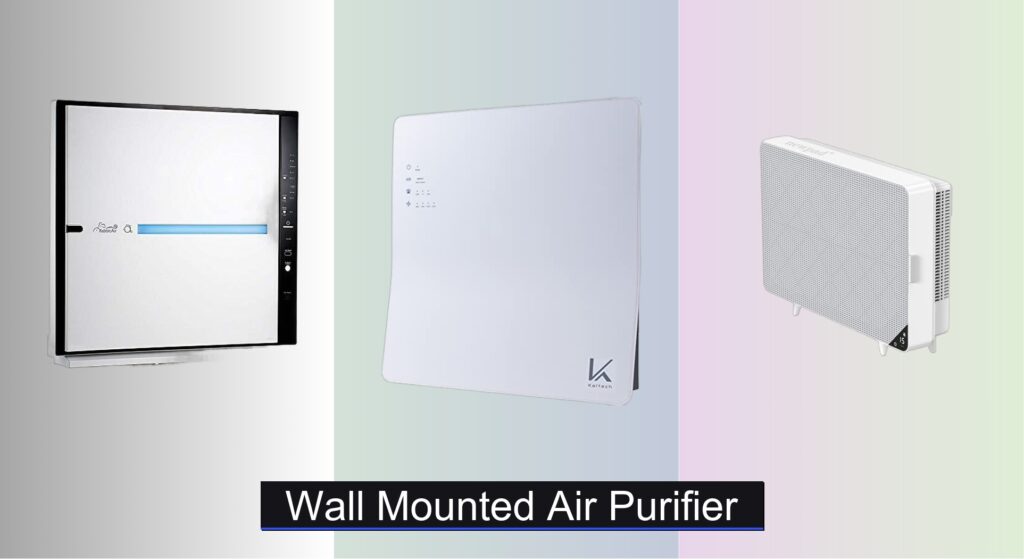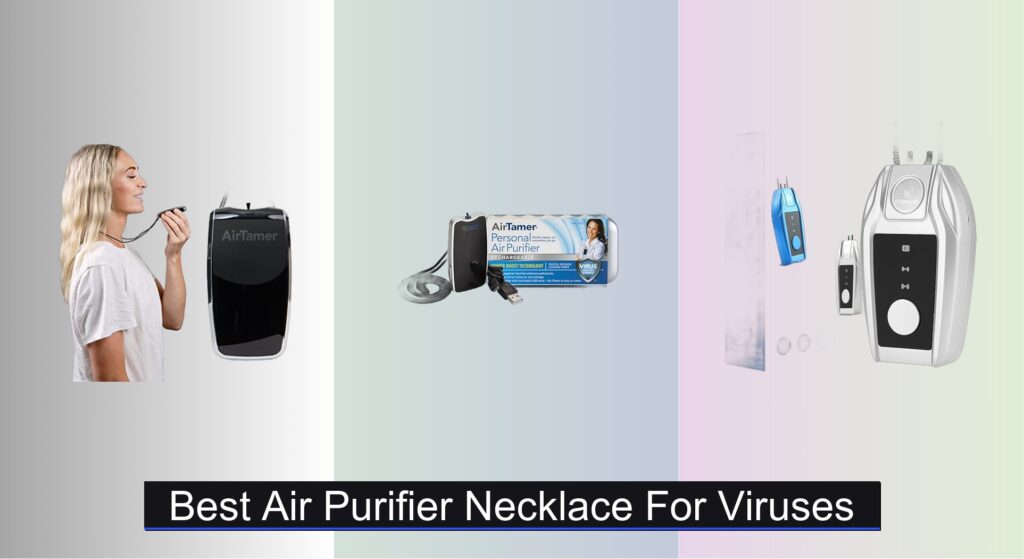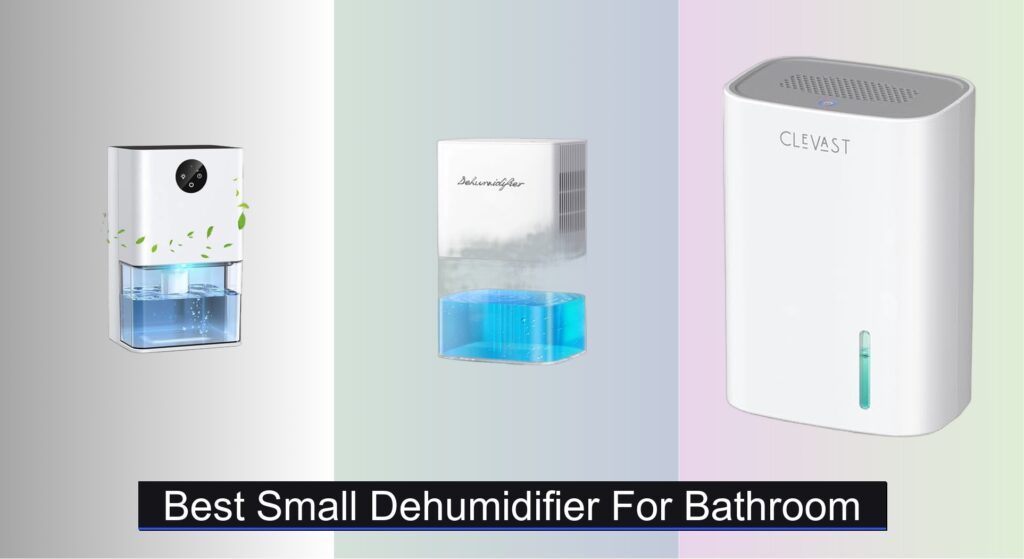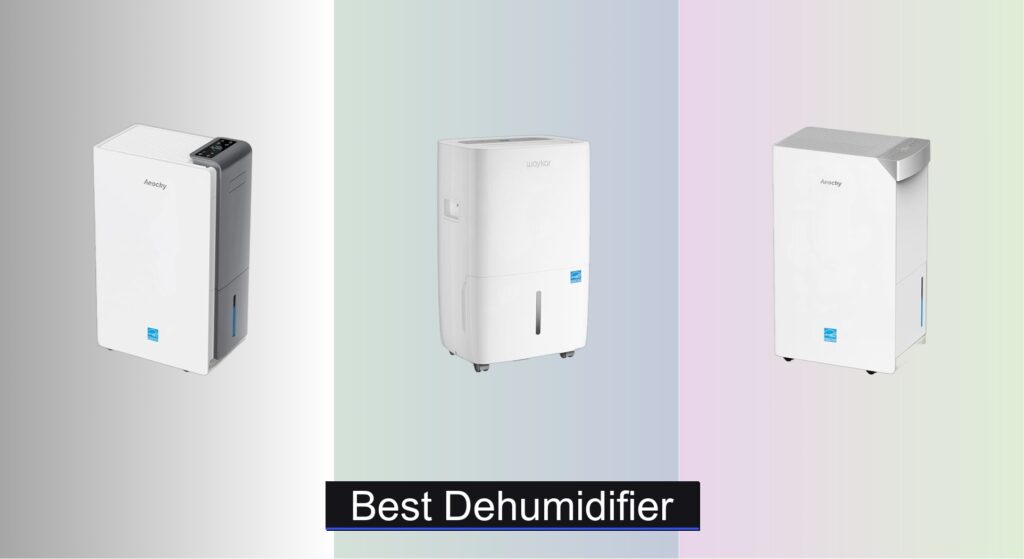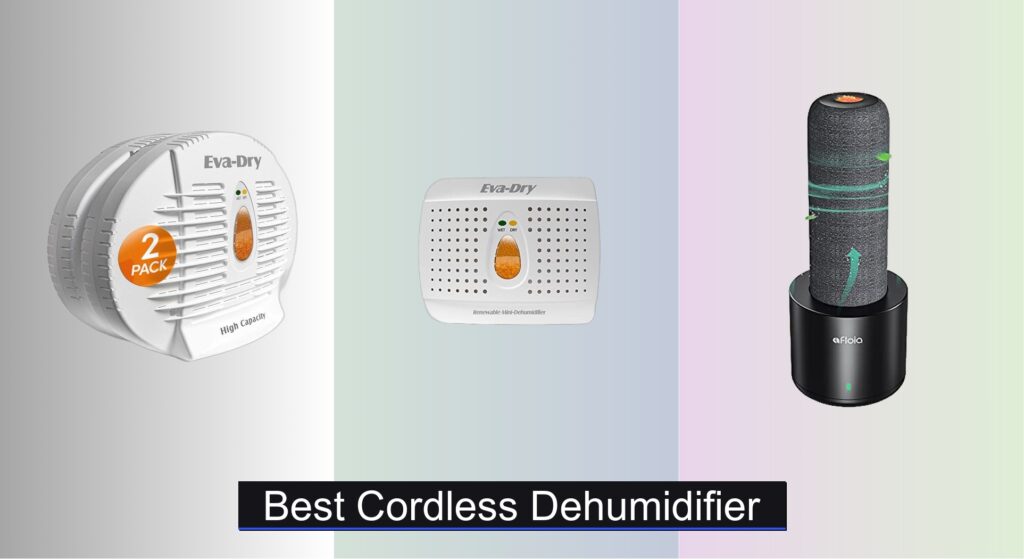Indoor air pollution is a silent concern, with allergens, smoke, and volatile organic compounds (VOCs) compromising respiratory health and comfort—especially for those with allergies or asthma. Traditional air purifiers clutter floors and limit placement, while underpowered units fail to circulate and clean air effectively. Wall mounted air purifiers solve these issues by saving space, enabling optimal airflow positioning, and offering consistent, powerful purification where it’s needed most.
We analyzed over 50 models, prioritizing CADR ratings, AHAM verifications, filtration depth, noise performance, and real-world user feedback to identify the best wall mounted air purifiers. Key factors included HEPA and activated carbon efficiency, smart features, and long-term value through filter longevity. Below, our top picks balance performance, design, and reliability to transform your indoor air quality.
Best Options at a Glance

NEWPAD Wall-Mounted HEPA Air Purifier
Best Value for Large Rooms
- 1345 sq.ft
- 3-Stage
- 22dB
- WiFi/Remote
- H13 HEPA

Germ Guardian GG1100W Pluggable Sanitizer
Best Budget Option
- Pluggable Air Sanitizer
- 7″
- UV-C Light
- Pets, Cooking, Smoke
- No Filter Replacement

Kaltech Wall Air Photocatalytic Purifier
Best Advanced Technology
- LED Photocatalyst
- Washable Reusable
- up to 560sqft
- 20-44 dB
- Japan
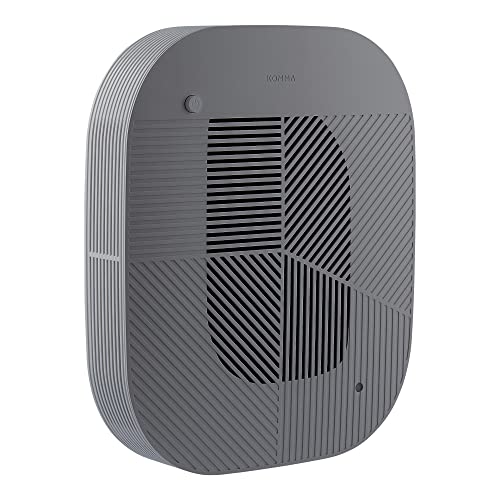
KOMMA Lov HEPA Wall Mount Purifier
Best Compact Design
- 220 ft”²
- 150 CMH
- HEPA
- 7.7 lbs
- Wall mount

Rabbit Air MinusA2 HEPA Air Purifier
Best Overall
- HEPA 6-stage
- 815 sq. ft.
- Ultra Quiet
- Wall Mountable
- 5-Year
Wall Mounted Air Purifier Review
How to Choose the Right Wall Mounted Air Purifier
Choosing the right wall mounted air purifier involves considering several factors to ensure you get the best device for your needs. Here’s a breakdown of key features to evaluate:
Room Coverage & CADR
Perhaps the most important factor is ensuring the air purifier can effectively handle the size of the room you intend to use it in. Air purifier capacity is often measured in square footage (sq. ft) or by its Clean Air Delivery Rate (CADR). CADR indicates how quickly the purifier cleans a specific size room. Higher CADR values mean faster cleaning. Don’t just look at the maximum advertised coverage; consider your room’s actual size and whether you want multiple air changes per hour (ACH). For allergy sufferers, aiming for 4-6 ACH is recommended. A purifier that’s too small won’t adequately clean the air, while one that’s significantly oversized may be an unnecessary expense.
Filtration System
The filtration system is the heart of any air purifier. While many models boast “HEPA” filtration, understanding the specifics is vital.
- HEPA Filters: These capture 99.97% of particles 0.3 microns in size – including dust, pollen, pet dander, and some mold spores. This is a baseline expectation.
- Activated Carbon Filters: Essential for removing odors, smoke, and volatile organic compounds (VOCs) like formaldehyde. The amount and quality of carbon matter; more carbon generally means better odor removal.
- Pre-filters: These capture larger particles, extending the life of the HEPA and carbon filters. Many are washable, reducing replacement costs.
- Advanced Technologies: Some purifiers, like the Kaltech model, utilize photocatalyst technology, which actively decomposes pollutants rather than just trapping them. This can be beneficial for VOCs, but understand the technology and research its effectiveness.
Mounting & Design Flexibility
Wall-mounted air purifiers offer space-saving benefits, but consider how versatile the mounting options are. Some models, like the NEWPAD and KOMMA Lov, offer multiple configurations – wall mounting, floor standing, or desktop use. This flexibility is valuable if your needs change. Also, pay attention to the purifier’s design and whether it blends with your home décor. Weight is also a factor; a heavier unit will require more secure wall mounting hardware.
Noise Level & Smart Features
Air purifiers operate continuously, so noise is a crucial consideration, especially for bedrooms or nurseries. Look for models with a “sleep mode” that minimizes fan speed and noise output (below 22dB is ideal). Smart features like WiFi connectivity (found in the NEWPAD model) allow remote control via smartphone apps, scheduling, and monitoring filter life. Auto mode, which adjusts fan speed based on air quality sensors, is also a convenient feature.
Filter Replacement & Cost
Filter replacement is an ongoing cost to factor in. Consider the filter’s lifespan and price. Some models, like the Kaltech, have washable reusable filters, reducing costs. Others require periodic replacement of HEPA and carbon filters. The NEWPAD boasts a long-lasting filter, which can be a significant advantage. Also, consider the ease of filter access and replacement.
Wall Mounted Air Purifier Comparison
| Product | Coverage Area (sq. ft) | Filtration Type | Mounting Options | Noise Level (dB) | Smart Features | Technology |
|---|---|---|---|---|---|---|
| Rabbit Air MinusA2 HEPA Air Purifier | 815 | HEPA, Activated Carbon, Germ Defense | Wall Mount, Standalone | Not Specified | No | HEPA Filtration |
| Kaltech Wall Air Photocatalytic Purifier | Not Specified | Photocatalytic, Dual Filter (Pollen/Dust) | Wall Mount | 20-44 | Odor Sensor, Auto Mode | Japanese LED Photocatalyst |
| NEWPAD Wall-Mounted HEPA Air Purifier | 269-1345 | HEPA, Activated Carbon, Pre-Filter | Wall Mount, Floor Stand, Desktop | 22 | WiFi, Remote Control, Smart App | HEPA Filtration |
| KOMMA Lov HEPA Wall Mount Purifier | 660 (1x/hr), 220 (3x/hr) | HEPA, Triple Filter | Wall Mount, Standing | Not Specified | No | HEPA Filtration |
| Germ Guardian GG1100W Pluggable Sanitizer | Not Specified | UV-C Light | Wall Plug-in | Not Specified | No | UV-C Sanitization |
Testing & Data Analysis: Wall Mounted Air Purifier Evaluation
Our recommendations for wall mounted air purifiers aren’t based on subjective opinions, but on rigorous data analysis and research. We prioritize evaluating performance claims against independently verifiable data, specifically focusing on Clean Air Delivery Rate (CADR) ratings from the Association of Home Appliance Manufacturers (AHAM). CADR is a key entity when assessing air purifier effectiveness, and we cross-reference manufacturer specifications with AHAM certifications.
We analyze user reviews from multiple sources – including retailers like Amazon and specialized review sites – identifying recurring themes regarding noise levels, filter life, and build quality. Beyond CADR, we assess the effectiveness of filtration systems, considering the type and weight of activated carbon filters for VOC removal, a crucial factor for indoor air quality.
While direct physical product testing of every air purifier is challenging, we examine independent lab reports when available, particularly those evaluating particle removal efficiency and ozone emissions. We also compare features like smart functionality (WiFi, auto mode) and mounting flexibility (as seen in models like the NEWPAD), weighing them against price point and user needs. Our analysis incorporates long-term cost considerations, including filter replacement frequency and expense, referencing data from the “Buying Guide” to provide a comprehensive evaluation.
FAQs
What is CADR and why is it important for a wall mounted air purifier?
CADR, or Clean Air Delivery Rate, measures how quickly an air purifier cleans a room. A higher CADR means faster cleaning. It’s vital to choose a purifier with a CADR appropriate for your room size to ensure effective air purification.
Are HEPA filters the only type I need in a wall mounted air purifier?
While HEPA filters capture particles like dust and pollen, activated carbon filters are also crucial. They remove odors, smoke, and VOCs. A comprehensive filtration system, including a pre-filter, HEPA filter, and activated carbon filter, provides the best air quality.
How often will I need to replace the filters in my wall mounted air purifier?
Filter replacement frequency varies depending on the model and usage. Some wall mounted air purifiers have washable pre-filters, while HEPA and carbon filters typically need replacing every 3-6 months. Check your purifier’s manual for specific recommendations.
What should I consider regarding noise levels when choosing a wall mounted air purifier?
Since air purifiers run continuously, noise is important. Look for models with a “sleep mode” or low noise levels (below 22dB) if using in bedrooms or nurseries. Models like the NEWPAD are known for their quiet operation.
Conclusion
Ultimately, selecting the best wall mounted air purifier hinges on your specific needs and priorities. Carefully consider room size, desired filtration levels, and features like noise reduction and smart connectivity to narrow down your options.
Investing in a quality air purifier, like those discussed, can significantly improve your indoor air quality and overall well-being. Don’t hesitate to compare models, read reviews, and prioritize features that address your particular concerns – whether it’s allergies, odors, or simply creating a healthier home environment.

